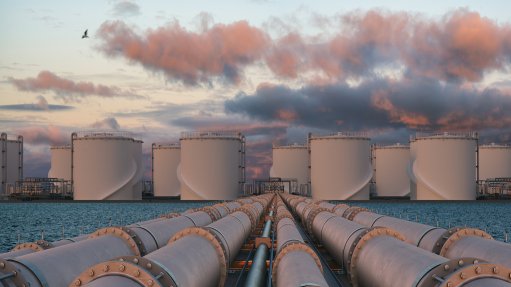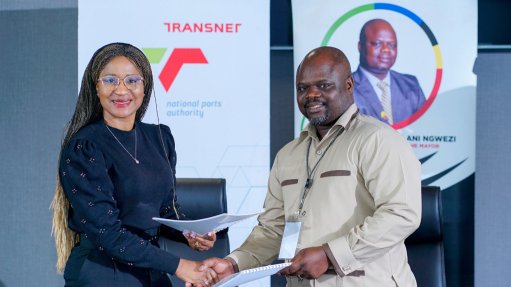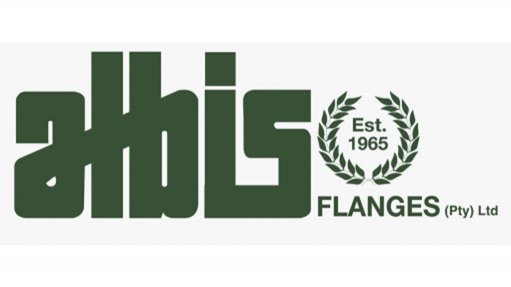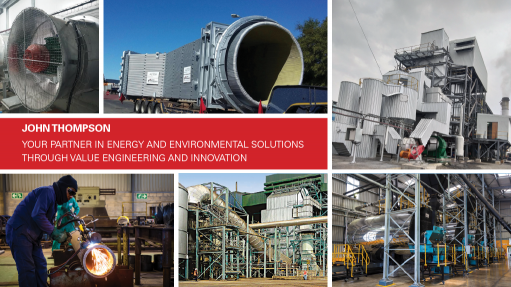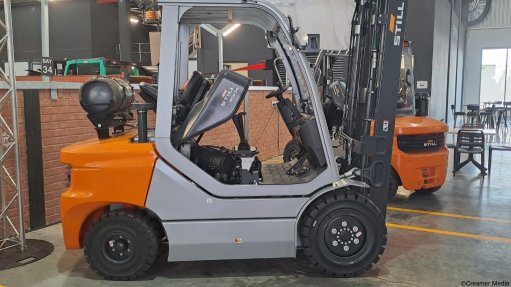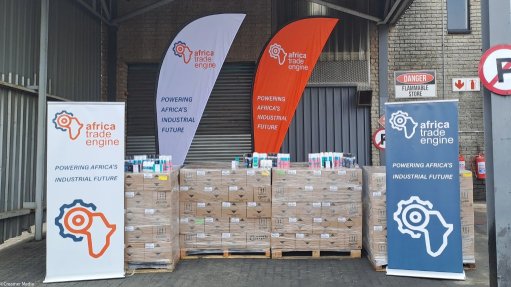Construction of LHWP’s Senqu Bridge enters final lap
Construction of the Senqu bridge, a part of the Lesotho Highlands Water Project (LHWP), is nearing completion, ensuring the connection of communities across the Polihali reservoir.
Once the Polihali dam is complete, its reservoir will flood 5 042 ha of the Senqu and Khubelu river valleys, submerging roads, farmland and sections of Lesotho’s vital A1 national route.
Without intervention, the regional hub, Mokhotlong, would lose its primary road link to the rest of the country.
Three existing river crossings on the primary A1 route will vanish beneath the water, including the deepest at the Senqu river, where the valley will be inundated to a depth of about 80 m.
Completion of the extradosed Senqu bridge will mitigate this.
“This bridge is not just about engineering; it is about ensuring that communities remain connected, that children can still get to school and that trade and livelihoods can continue, despite the changes the dam will bring,” says LHWP Phase II divisional manager Nts’oli Maiketso.
Construction of the bridge started in June 2023, following completion of site establishment.
By July last year, eight of the 15 piers had been completed and work was under way on the leading deck segments on both banks. By December, the contractor had completed all 15 piers and both abutments – a major milestone.
By the end of February this year, the two extradosed cable-stay sections had been cast and launched, the deck was more than 25% complete and the overall project was past the 75% completion mark.
The leading edge of both decks had reached the final piers in early August this year, leaving only the final 100 m to launch.
On August 15, the final deck segment on the western abutment was cast, with the final deck segment on the eastern abutment cast only a week later. By the end of that month, the final stages of the deck construction were well under way.
“Inside the deck, construction of the stiffening diaphragms that sit above each of the piers was well under way. On top, the installation of the ten remaining cable stays, five on each side, had begun.”
At the time, on the leading edges, removal of the temporary steel ‘noses’ was nearly complete, while, on the abutments, the dismantling of the temporary construction sheds was also close to completion.
With crews working from both ends of the bridge, the deck steadily extended towards the centre, with the two halves meeting in September.
This will be followed by meticulous “stitching together” to form the continuous 822-m-long deck.
After that, the final stressing of the deck’s internal cables will be done, the balustrades and handrails completed, the approach roads finished and, finally, the bridge deck surfaced.
“If all goes to plan, the Senqu bridge will open to traffic in February 2026 – restoring a vital artery across Lesotho’s highlands and standing as a testament to ingenuity under extreme conditions.”
The site is 2 100 m above sea level, and is accessible only through steep mountain passes topping 3 000 m, with most materials trucked in from South Africa, adding border logistics to the list of challenges.
Winter temperatures can plunge below –15 °C, while summer highs can exceed 35 °C, exacerbated by severe thunderstorms, strong winds and snow, further complicating work schedules.
To keep crews safe and productive, the project team has deployed freezer suits, infrared heaters and low-temperature accommodation units – measures rarely seen on African construction sites, says Maiketso.
“The terrain itself is equally unforgiving. On the west bank, access roads had to be blasted into sheer cliffs, and foundations for the first five piers were excavated sequentially from the top down.”
One of the most unusual engineering challenges was designing tall, slender reinforced concrete piers that will eventually stand submerged up to 80 m under water.
The team had to account for hydrodynamic forces, likely seismic events, and even the potential impact of a landslide into the reservoir. This required significant reinforcement in both piers and foundations.
The extradosed deck also demanded dense reinforcement, particularly around the cable pylons, leading to complex steel fixing operations.
Close collaboration between contractor and engineer was essential to keep progress on track.
The Senqu bridge construction tender was awarded to the WRES Joint Venture, which includes South African, Lesotho and international companies, in line with the requirements of the Phase II Agreement.
The primary partners are Italy-based Webuild, South African firms Raubex Construction and Enza Construction, and Lesotho’s Sigma Construction.
Subcontractors include South Africa’s EXR Construction and Post Tensioning and Structural Solutions, Austrian firm Gleitbau-Geselschaft, and France-based Freyssinet International et Cie.
Work on the bridge design started in 2018, led by Zutari, formerly Aurecon Lesotho, which also designed the Mabunyaneng and Khubelu bridges, the other two major bridges to be constructed under Phase II.
Zutari is also supervising construction of the three bridges.
“When the ribbon is finally cut, the Senqu bridge will not only span a deep valley – it will bridge the gap between isolation and opportunity for thousands of people in Lesotho’s rugged heartland.”
Article Enquiry
Email Article
Save Article
Feedback
To advertise email advertising@creamermedia.co.za or click here
Comments
Press Office
Announcements
What's On
Subscribe to improve your user experience...
Option 1 (equivalent of R125 a month):
Receive a weekly copy of Creamer Media's Engineering News & Mining Weekly magazine
(print copy for those in South Africa and e-magazine for those outside of South Africa)
Receive daily email newsletters
Access to full search results
Access archive of magazine back copies
Access to Projects in Progress
Access to ONE Research Report of your choice in PDF format
Option 2 (equivalent of R375 a month):
All benefits from Option 1
PLUS
Access to Creamer Media's Research Channel Africa for ALL Research Reports, in PDF format, on various industrial and mining sectors
including Electricity; Water; Energy Transition; Hydrogen; Roads, Rail and Ports; Coal; Gold; Platinum; Battery Metals; etc.
Already a subscriber?
Forgotten your password?
Receive weekly copy of Creamer Media's Engineering News & Mining Weekly magazine (print copy for those in South Africa and e-magazine for those outside of South Africa)
➕
Recieve daily email newsletters
➕
Access to full search results
➕
Access archive of magazine back copies
➕
Access to Projects in Progress
➕
Access to ONE Research Report of your choice in PDF format
RESEARCH CHANNEL AFRICA
R4500 (equivalent of R375 a month)
SUBSCRIBEAll benefits from Option 1
➕
Access to Creamer Media's Research Channel Africa for ALL Research Reports on various industrial and mining sectors, in PDF format, including on:
Electricity
➕
Water
➕
Energy Transition
➕
Hydrogen
➕
Roads, Rail and Ports
➕
Coal
➕
Gold
➕
Platinum
➕
Battery Metals
➕
etc.
Receive all benefits from Option 1 or Option 2 delivered to numerous people at your company
➕
Multiple User names and Passwords for simultaneous log-ins
➕
Intranet integration access to all in your organisation






